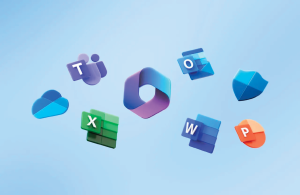
Cloud Migration 101 – Here’s where to start
Technical revolutions are rarely as transformative as the Cloud. This online-enabled way of working has opened up a wealth of tech to businesses, with many looking into dedicated Cloud migration for their future business strategy.
What is Cloud Migration?
Cloud migration is the process of moving your data, software and on-site technologies into a Cloud-enabled equivalent, saving on overheads, liberating office space and providing a more flexible workplace for you and your users.
Of course, no technical transformation happens overnight – and with the Cloud’s game-changing opportunities, you can expect your migration to be a complex beast.
Thankfully, you needn’t tame it unprepared – nor unassisted. Here’s 5 things to know before attempting your first Cloud migration.
Step 1: Know Why You’re Moving to the Cloud
Your Cloud migration isn’t quite an “instant Win” button; you need to know what you want from it. Do you need flexible data storage? A dedicated remote working solution for out-of-office employees? Are you simply trying to cut monthly expenses?
Your needs are specific, and so are the Cloud’s solutions. Identifying your requirements, and the Cloud solutions that match them, is the difference between a cost-effective game changer and a hole burned into your pockets.
Step 2: Know What’ll Be Affected
With Cloud migration, you’re translating vast quantities of data and tech into a virtual environment. Your company’s people and processes could all be potentially affected.
Familiarise yourself with your existing technologies, and how your Cloud migration might impact them. Most importantly, identify those technologies you rely on most; you may need to suspend a few and seek out short-term alternatives to help minimise downtime.

Step 3: Know You’re Protected
As with any major technical changes, the security of your business is paramount. Consider where your data is migrating to; if it’s sensitive, will a public Cloud solution offer the security you need, or will you need a bespoke private Cloud solution to meet stringent regulations? Consider encryption if you’re migrating large quantities of data, too; the longer it’s in transit, the more open it becomes to intrusion.
From start to finish, know where your data’s vulnerabilities lie, and have the appropriate securities in place for each step.
Step 4: Know Your Costs
Cloud migration takes time, and time is money. While the Cloud is an excellent enabler for long-term savings, businesses will need to factor in the initial costs of migration.
Still, researching the costs of your Cloud subscriptions could also help you identify savings opportunities and room potential for growth. Moving your company software to a subscription model could make monthly costs more manageable. Similarly, a flexible data storage solution saves on hardware and running costs while keeping pricing proportionate.
Look to the future, budget in advance, and you’ll soon discover how your ongoing savings offset those initial costs.

Step 5: Know that Help is Available
No business is expected to tackle their Cloud migration alone.
Managed IT service providers, such as RAD Group, ensure yours occurs seamlessly, leaving you to concentrate on your business. By taking the time to know your systems, security requirements and budget, you and your provider can begin the journey with both your best feet forward.
If you’re ready to take your company to the Cloud, we’re ready to help.
-
Underutilised Microsoft 365 apps and features
Underutilised Microsoft 365 apps and features The majority of UK businesses rely heavily on Microsoft 365. It's the productivity powerhouse... -
Hiring a technology consulting partner – best practices
Hiring a technology consulting partner – best practices If you’re considering partnering with an information technology company like us here... -
How to get ROI for your website
How to get ROI for your website In today's competitive online landscape, your website is your digital shopfront, brand ambassador,... -
Cybersecurity, cloud and automation – predicting IT budget spend in 2024
Cybersecurity, cloud and automation – predicting IT budget spend in 2024 As the UK business landscape continues to evolve, so... -
What is the true cost of IT downtime?
What is the true cost of IT downtime? In today's digital age, IT infrastructure is the backbone of any successful...





